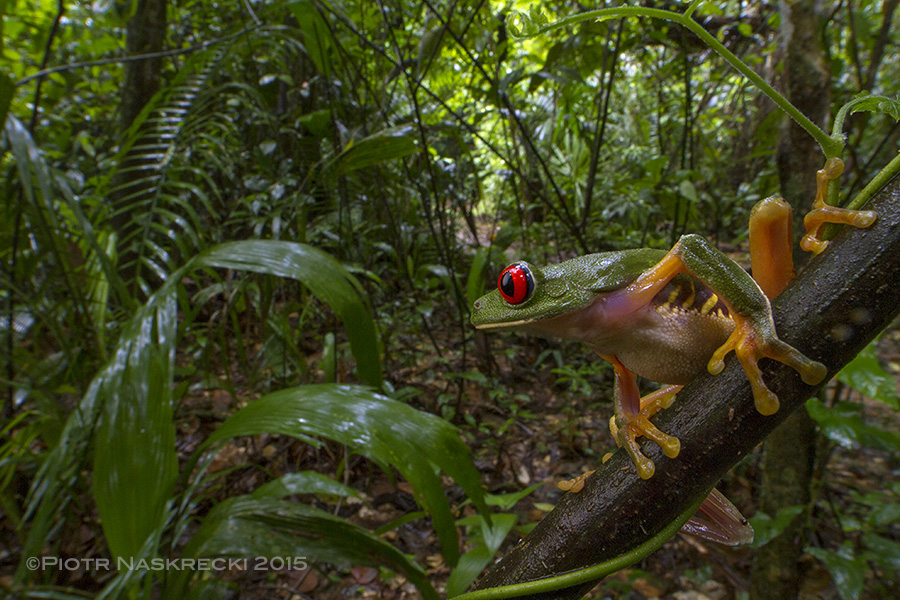
I almost got away with it – for five days I had covered my body and slathered insect repellant onto my skin with an almost religious zeal, but on the last day I faltered. I was in Belize, teaching macrophotography at the Bugshot workshop. The course was almost over, and so I relaxed and decided to shoot some red-eyed tree frogs in the rainforest around the lodge. I rolled up my sleeves but, because I had misplaced my insect repellant and was too lazy to look for it, I did not put any DEET on. Big mistake. As I photographed the frogs, clouds of mosquitos, perhaps sensing a new, unprotected warm body, went to town on my arms and face. But, this being my last day in Belize, I decided to ignore the little vampires and kept taking pictures. Later that day my arms were quite itchy, but it was nothing new or unusual.
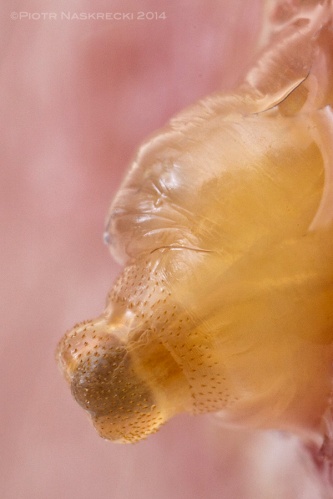
Things started veering off course after I got home. Some of the mosquito bites kept itching and, rather than disappearing, started to get bigger. It didn’t take me long to realize that I had brought with me, embedded in tiny holes in my skin, larvae of the Human bot fly (Dermatobia hominis). This was not the first time for me to have this parasite. What was new was the number of these animals that had made my body their home – at least six of them were feeding on both my arms, with four spaced only a millimeter apart on my right forearm. In the end, only three of them survived the first week. One of the surviving larvae was on my elbow. It was a nasty little thing, very active and painful. It had to go. But I decided to keep the two remaining larvae. As strange as it sounds, I felt bad about killing them, but I also had never seen an adult bot fly, and this was my chance.
Human bot flies are well known to entomologists and people living in warm, tropical parts of Central and South America. I cannot think of any of my biologist friends working there who didn’t have a torsalo living in their skin at some point or another, often in such very inconvenient places as the eyelid, the upper lip, or the top of the head. These get extracted through a variety of methods that often involve suffocating the larva with glycerine jelly, raw steak, or duct tape, and then pulling or squeezing the larva out of the skin. These methods usually work, but there is always a risk of leaving a part of the bot’s body in the wound, which may lead to infection. On those occasions where I needed to remove a larva, I preferred to use a suction venom extractor, which enlarges the opening of the wound (warble) and pulls the larva out, still alive and in one piece. I only discovered this method, first described 13 years ago (Boggild et al. 2002. Clin. Infect. Dis. 35: 336-8), after a visit to my doctor. Her solution was to perform a surgery by cutting my arm open. I said “thanks, but no thanks” and did my own research on furuncular myasis.

Human bot flies (D. hominis), despite their name, are not interested in our species only. They will gladly feed on other primates, as well as ungulates and other large mammals. Similarly, other members of the bot fly family (Oesteridae), who preferentially target small mammals, will occasionally find themselves on humans. But we get infected with D. hominis more often than with other bot flies because of this species’ unusual strategy of dispersing its eggs. Rather than laying them on the ground in the vicinity of mammalian burrows, the way other bot flies do, the D. hominis female catches and lays her eggs on other exoparasites: mosquitos, ticks, and deer flies. The eggs hatch while on the intermediate host and drop onto the skin of the ultimate host, often a human, when they sense its body heat. Frequently they will use the hole made by the mosquito to enter the skin but they can also use a hair follicle to get inside. Even the newly hatched larvae are covered with spines that point up, which makes pulling them out from the warble very difficult.
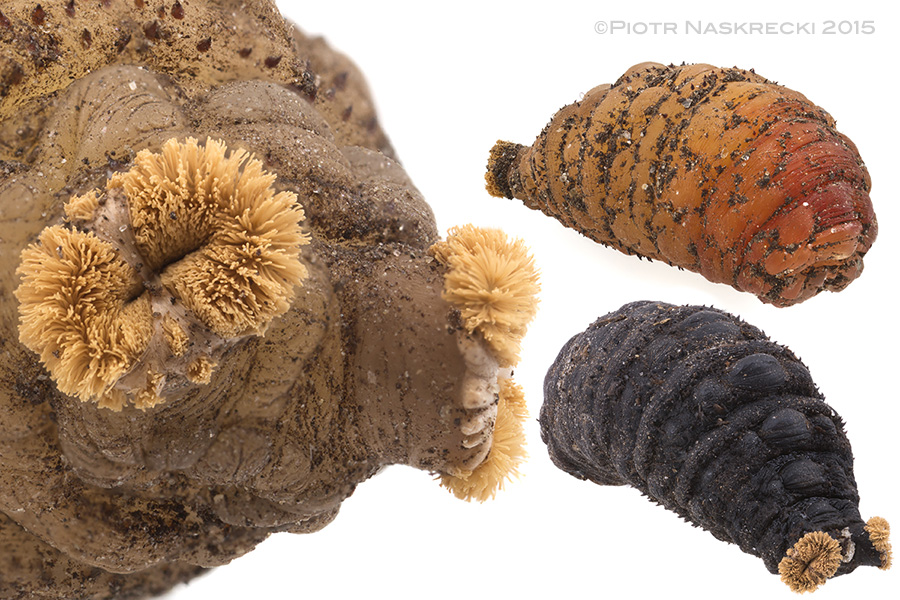
Once in the skin, the larva undergoes three molts and in 7-10 weeks grows from the size of a grain of sugar to that of a peanut. Throughout this time the warble enlarges and occasionally bleeds, but otherwise it is relatively painless, unless the larva decides to munch on nerve endings. These wounds rarely get infected as the larva very likely produces antibiotic secretions. Once fully grown, the larva crawls out of the warble and falls to the ground, where it quickly buries itself and turns into a puparium. The wound usually heals completely within a couple of days. All in all, not a big deal. But some people, for whatever reason, don’t like to have a squishy, almost harmless animal living in their skin.
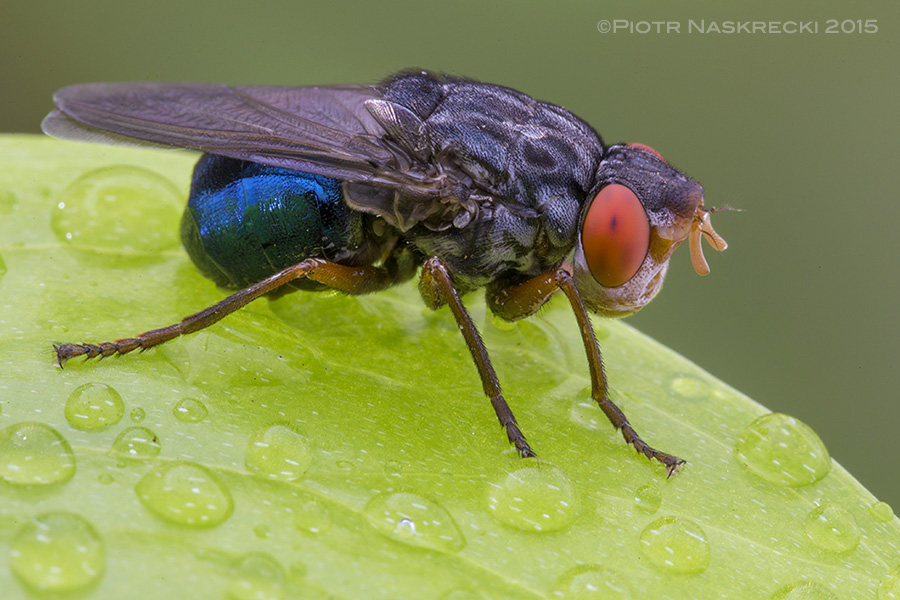
A mounting body of research indicates that many parasites have evolved a way of manipulating the behavior of their hosts. A parasitic horsehair worm will make its otherwise terrestrial grasshopper jump into the water, where it then ruptures the grasshopper’s body and swims away. Parasitoid wasps who have just left the emaciated body of a caterpillar will be actively protected by their brain-washed host. Humans also fall victim to parasitic manipulation – there is evidence that toxoplasmosis, a disease caused by protozoan Toxoplasma gondii, makes men less intelligent and prone to take greater risks (it has to do with increasing the likelihood of ending up as food for large cats, Toxoplasma’s ultimate host; inexplicably, the effect on women is a statistically significant increase in their intelligence.)
After I had decided to keep two of my botflies and let them reach maturity, I began to wonder – have the generations of entomologists, who let these flies live in their skin as a kind of geeky right of passage, inadvertently selected for a strain of bot flies that manipulate human behavior towards letting the flies live? Or do I just have toxoplasmosis?
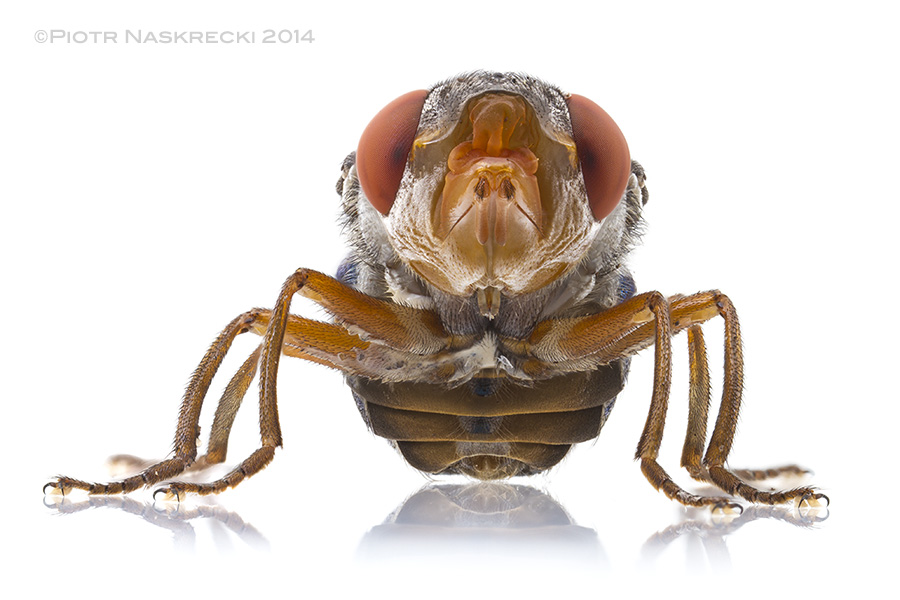
In any case, the flies survived in my skin for nearly 10 weeks, successfully emerged, pupated, and are now enjoying a brief life as adults. Brief, because adult bot flies have no functional mouthparts and cannot feed, which means that they only live for a few days. They are quite pretty – I would go as far as to say that, among insects, they undergo one of the most dramatic transitions from ugly to cute during their development.
It was an interesting experience and I am glad that I managed to bring these insects to maturity. But rest assured that the next time I am in Belize my bottle of DEET will never leave my pocket.
Stay tuned for a video with some awesome sequences showing the development of my bot fly!
Update: The video is now available.

Postscript
I let my bot flies live and I went to great pains to make sure that they survived their inadvertent exodus from their native land of Belize. Will this endear me to people who wanted to crucify me for killing a puppy-sized spider a few months ago? I am guessing, no. Do I give a crap? Take a guess. Incidentally, now that the dust has mostly settled, I can repeat that I did not kill the puppy-sized spider – another scientist collected and preserved it – although this bit of information somehow didn’t register with the online media. There was no point in clarifying this because it is completely irrelevant to the issue of scientific collecting – I have killed and preserved my share of specimens, and I will always defend biologists who have the unpleasant duty to do so.
Postscript 2
Gil Wizen has written about his experience of raising a dipteran child on his blog.

Dear Professor Nasrecki,
am I right in assuming that botfly larvae that happen to drill into adipose tissue (a human host`s beer belly, for example) tend to grow to bigger sizes than the ones that drill into places with relatively shallow soft tissue (like the scalp) ?
An intriguing story about botfly that uses the human body as a host in order to grow. Thanks for the demonstration!
I hope you didn’t introduce this fly to another country. We in Hawaii are paying the price for such invasions.